AMD’s 5 GHz Turbo CPU in Retail: The FX-9590 and ASRock 990FX Extreme9 Review
by Ian Cutress on August 9, 2014 8:00 AM ESTASRock 990FX Extreme9 BIOS
For those that have followed our Z87 and Z97 BIOS coverage, the ASRock BIOS for the 990FX Extreme9 falls very much on the side of Z87, which makes sense as the platform will probably not be seeing many updates, if any, for the foreseeable future. The main screen uses white text on a starry background, with the selected option very clearly defined.
In this main screen we have details of the motherboard name, the BIOS version, the CPU installed, the CPU Speed, the DRAM installed, the per-module density and the current speed of each module. Other information that would be good to have includes the main system voltages, temperatures and fan speeds. Note that ASRock has not yet implemented a system that contains this information across every BIOS screen, unlike some of their competition. On this screen is also an ‘Active Page on Entry’, useful for overclockers that want the BIOS to skip straight into the OC Tweaker menu.
The OC Tweaker menu, as the name suggests, has the overclocking options. ASRock like to add in some automatic overclock options, and here we get the choice from a 5% to a 50% overclock:
Typically the higher overclocks would be outlined in red to indicate an extreme overclock, but ASRock does not do that here. The rest of the OC Tweaker menu has the CPU configuration settings, DRAM Timing options and Voltage configuration. Load Line Calibration is a single option in the voltage section, and the DRAM Timing Control is a separate menu item for memory sub-timings:
The Advanced tab contains options for enabling/disabling controllers, adjusting SATA modes and implementing some power saving features. The Tool menu next is where ASRock has their more interesting features, such as System Browser that gives an overview of the motherboard and tells the user what is installed:
The Online Management Guard feature displays a timetable for the week and allows the user to disable the network features. One of the major purposes of this feature is for adults to restrict their children’s use of the internet at odd hours of the day.
The Dehumidifier function keeps fans enabled after the system has switched off in order to equilibrate the temperature inside the case with the temperature outside the case. In the event of warm, moist air in the case that cools in the evening, in humid climates this may cause condensation, hence this feature. There are also menu options to save user profiles within the BIOS underneath this setting.
The Fan Controls are how ASRock used to do them, in terms of ‘levels’, with the higher the level indicating how quickly the CPU fan power would ramp up. Some of the headers have the option of tying the fan power to the CPU temperature, meaning that if the CPU temperature rises above a value, the fan is placed on full speed until the target temperature is reached.
The BIOS finishes up with boot options and security. One missing feature from ASRock BIOSes is a boot override feature, allowing for a one-time boot from within the BIOS.
ASRock 990FX Extreme9 Software
The software for the Extreme9 is centered around the ASRock Extreme Tuning Utility, or AXTU for short. AXTU used to be the main interface, until A-Tuning came about for Intel’s 8-series motherboards, but due to the age of the motherboard (or perhaps incompatibilities) this software has not been upgraded.
The screen that pops up first with AXTU is the Hardware Monitor interface. This shows the CPU speeds, base frequencies and multipliers, as well as the fan speeds, temperatures and voltages. Two key bits of information missing are the CPU installed and the motherboard which is being used.
AXTU also is part of the fan control:
The fan controls here are similar to that in the BIOS, relying in the ‘level’ system to determine the gradient at which the fan speed is ramped up. Users can select a target temperature which will put the fan at full speed when the CPU is above the target.
The overclocking interface offers several simple options, although no automatic overclocking setups. Here we can adjust the base frequencies, the multipliers and the voltages, although nothing along the lines of load-line calibration.
AXTU also provides an interface to save the BIOS and some power saving features, but also XFast RAM. This feature allows the user to partition off some of the memory into a RAMDisk, and AXTU will also manage some caching options in order to speed up some of the operating system functions.
While ASRock has dropped XFast USB with the latest Intel 9-series motherboards, the software is here on the Extreme9 and implements newer USB protocols to increase peak transfer speeds at the expense of latency. In our copy tests, the XFast feature does provide a tangible benefit, although the feature is limited to one USB device at a time.
XFast LAN is a licensed and skinned version of cFos, which allows for software manipulation of network priority.



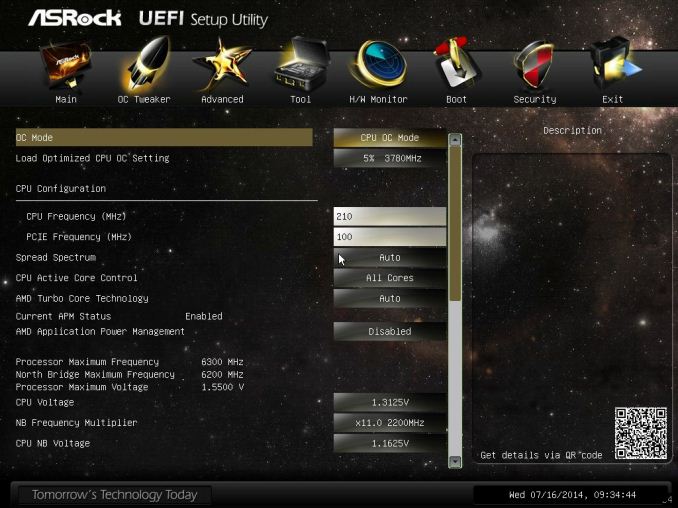
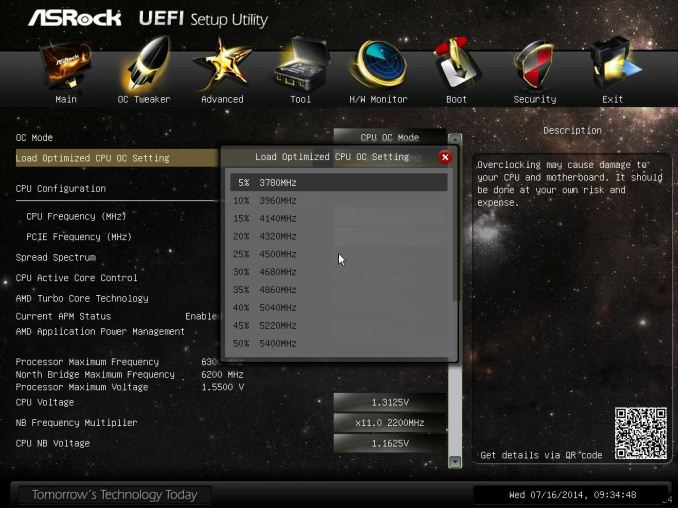
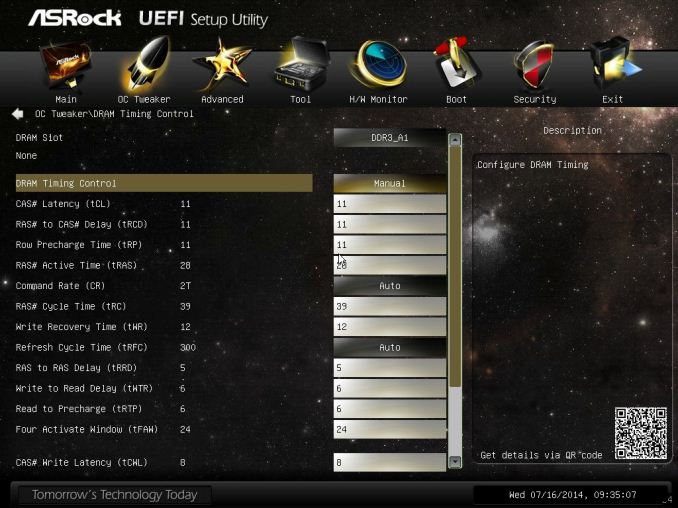

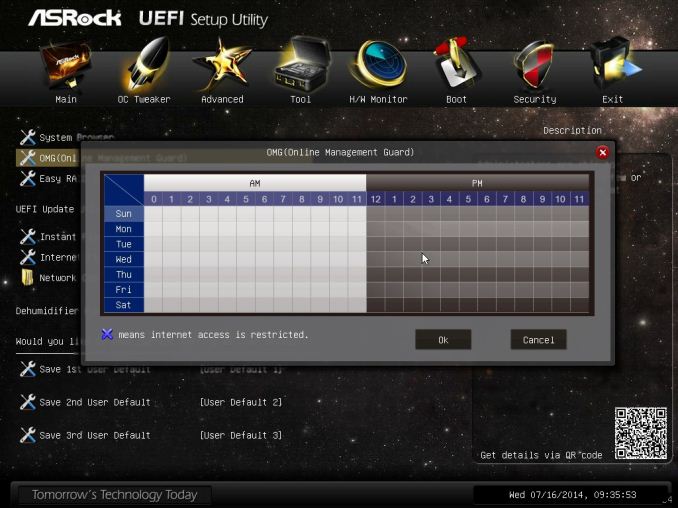

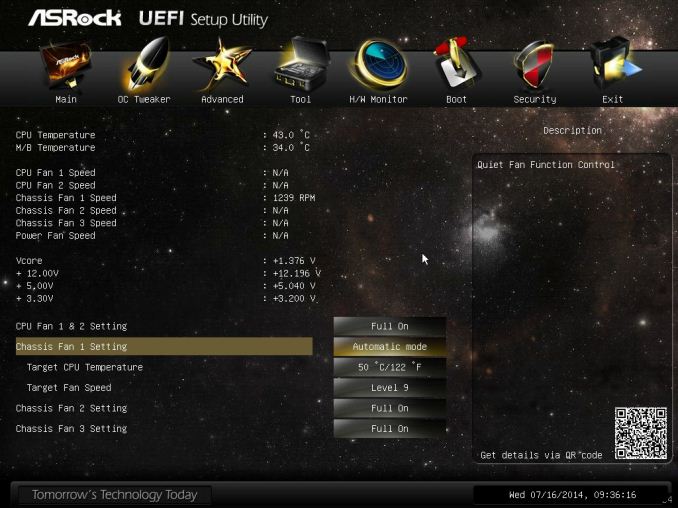







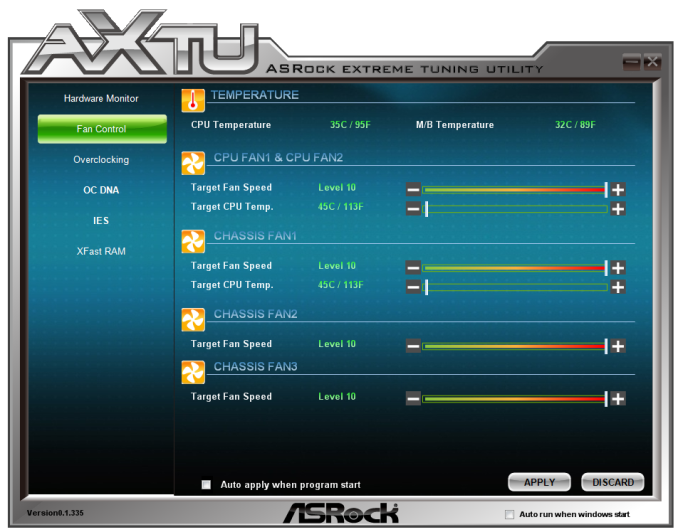
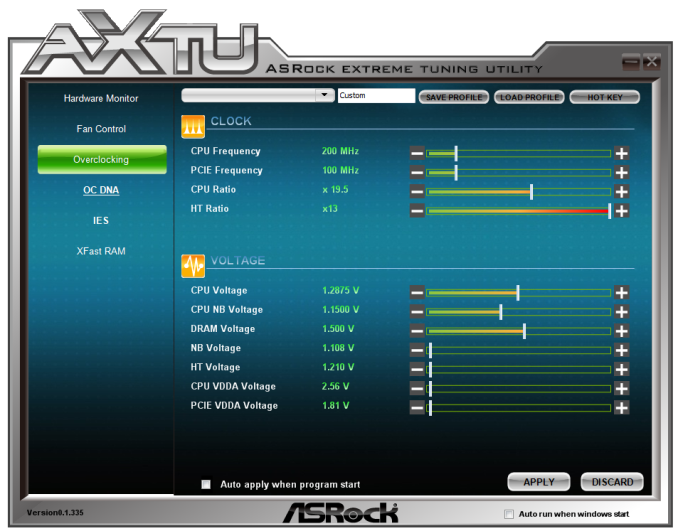

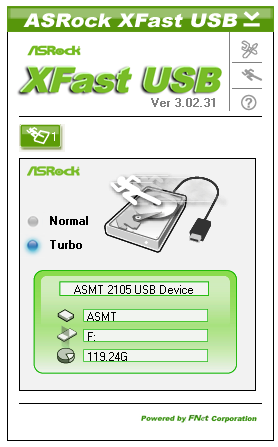
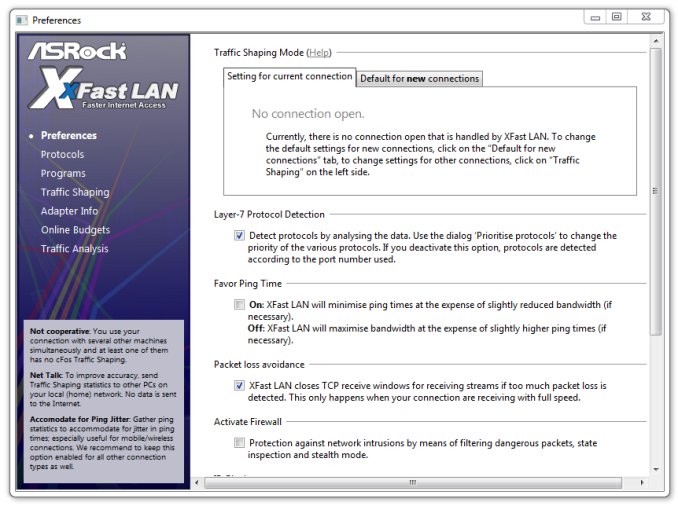














146 Comments
View All Comments
NeatOman - Saturday, August 9, 2014 - link
I have a FX-8320 @4.5Ghz, and never goes over 75c. I got it because it was $215 for both the CPU and a very good motherboard, and paired it with two HD 7850's. With that said, an overclocked i5@4.4Ghz is better then anything AMD can do over clocked even @5Ghz (for the most part) and at times far out classes it. But, an i5 and good motherboard will cost about $350 and $400+ for i7.. Almost twice. FYI, I live in Illinois and the electricity here is very very cheap.colinstu - Saturday, August 9, 2014 - link
a $300+ AMD chip?! LOL. Who the heck would buy this? It's not efficient, it's definitely not fast compared to $100 cheaper intel offerings (or similarly priced offerings in some of the other benches).swizeus - Saturday, August 9, 2014 - link
Second your opinion... It has been 3rd generation (or more ?) since FX gone out the door and AMD should have a solution to at least match Intel's performance by now, but why this ? It is pointless to have a power hungry beast that lost in the match with a processor that is halved in TDP in an Unzipping archive operation, not to mention electricity bill and the noise to cool down 220Watt TDP Processor... Not worth itRussianSensation - Sunday, August 10, 2014 - link
The amount of generations or the time span doesn't have any correlation with AMD catching up. Take an i7 4790K and manufacture it in 28-32nm node and see how awful it is. In other words, unless AMD can manufacture chips on the same node as Intel, it has no chance of competing whatsoever even if by magic their CPUs had identical IPC and clocks to Intel's. The delta in performance and performance/watt will only grow once Intel launches Skylake on 14nm next year.Budburnicus - Wednesday, March 11, 2015 - link
Umm a 4790K even at 32nm would still spank this chip across the board. How "awful" indeed...I mean forget the 4790K for a second, the 2600K at STOCK will beat this CPU out in nearly everything. and basically any i7-2600k on any board that supports overclocking WILL easily hit 4.2-4.4 - hell I had mine at 4.4 with a STOCK POS Intel Heatsink (POS in terms of its ability to cool, it is actually more than effective enough with how little heat the CPUs generate) - And at those speeds the 2600K beats out any and every AMD consumer CPU at almost everything, and what few benchmarks it will be behind in, it will not be by too much. And those benchmarks would include only VERY highly multithreaded applications of computational power - basically, server-type stuff. Certainly not in gaming!
Then there's the NEWER Intel CPUs like the i7-5930K (which I also own) which aren't too much more expensive than this flop, and will beat it out in absolutely anything and everything - at stock clocks again! With the exact same CoolerMaster Hyper 212 EVO I have on my i7-2600K machine (AWESOME cooler for the money, though I will probably replace the one currently on the 5930, as it does not provide the maximum OC headroom possible like it does on my 2600 machine) - with dual fans, I have all cores running totally stable at 4.4 GHz with 105.7 Bclock!
AMD really needs to dump this architecture for the consumer class entirely (though I admittedly am not too familiar with Server-class CPU benchmarks, from what I have read the newer Intel Xeon are spanking the current Opterons, but IIRC they still represent good value for money in the high end workstation and server classes - though Enthusiasts generally seem to stick with the Xeons as they like to be able to game at insane speeds and resolutions as well as do encoding, editing, CAD, etc. As I have seen quite a few "ULTIMATE Rig builds" where money is no issue, by people like NCIX, Linus Tech tips, PCper, and others on YouTube, but I have yet to see an ultimate Opteron machine)
So, yeah... All that speaks volumes to people who look at information objectively and without bias. IF AMD were to come out with a new chip tomorrow which not only spanked everything Intel has ever made, but also made it cheap like the original SandyBridge parts - and therefore changed the game, DAMNED right I would be coveting a brand new AMD rig, and would likely sell off my 2600K machine, despite my deep love for it (and the fact that it games slightly better than the 5930 due to higher core speeds by a decent bit) to try to fund such a build ASAP!
But as it is? You would have to be a blind fanboy to buy a CPU like this for a brand new build, as it does not perform well and eats power like crazy, requiring AMD to bundle a friggen AIO water-block with it! And even with the best of the best, it will BARELY overclock! So the stock speed benchmarks will never be too far from a sustainable, stable, overclock - a FAR different story from the i5-i7 2000-5000 K series CPUs - as I said, a pretty average overclock on an i7-2600K is 4.2 GHz, a full 1 GHz above stock speeds, as the 3.8 GHz turbo only works when a single core is under load, and even then it will still beat out tthis 5950 in most ways!
lurker22 - Saturday, August 9, 2014 - link
Is AMD even trying anymore? That power draw is PATHETIC in the year 2014xdrol - Saturday, August 9, 2014 - link
I think the fact that this very processor is still 'the' flagship shows that no, they are not even trying.TiGr1982 - Saturday, August 9, 2014 - link
No, they actually don't. This is just cherry-picked and overclocked FX-8350 from October 2012 with all the associated power draw and heat growing superlinearly because of the much higher operating voltage.However, AMD does develop their CPU side of the business, but since Kaveri this January the results go only into APUs (same will happen with Carrizo coming next year).
AMD APUs are actually very fine in their class, they are just in a shy situation regarding these factory overclocked 220W FXes. The rest of their lineup is fine.
StrangerGuy - Saturday, August 9, 2014 - link
300W alone for a CPU, holy mother of god. An entire Haswell gaming rig with 750 Ti would probably draw less power.BTW $250 is insane for any motherboard let alone an AMD one. That's an i5 4590 and a budget mobo right there already.
Daniel Egger - Saturday, August 9, 2014 - link
> 300W alone for a CPU, holy mother of god. An entire Haswell gaming rig with 750 Ti would probably draw less power.Don't know where you got that 300W from but yes, a decent Haswell system with 750 TI will not just probably but definitely draw less power than 300W. Mine takes around 35W idle and up to 120W in games.